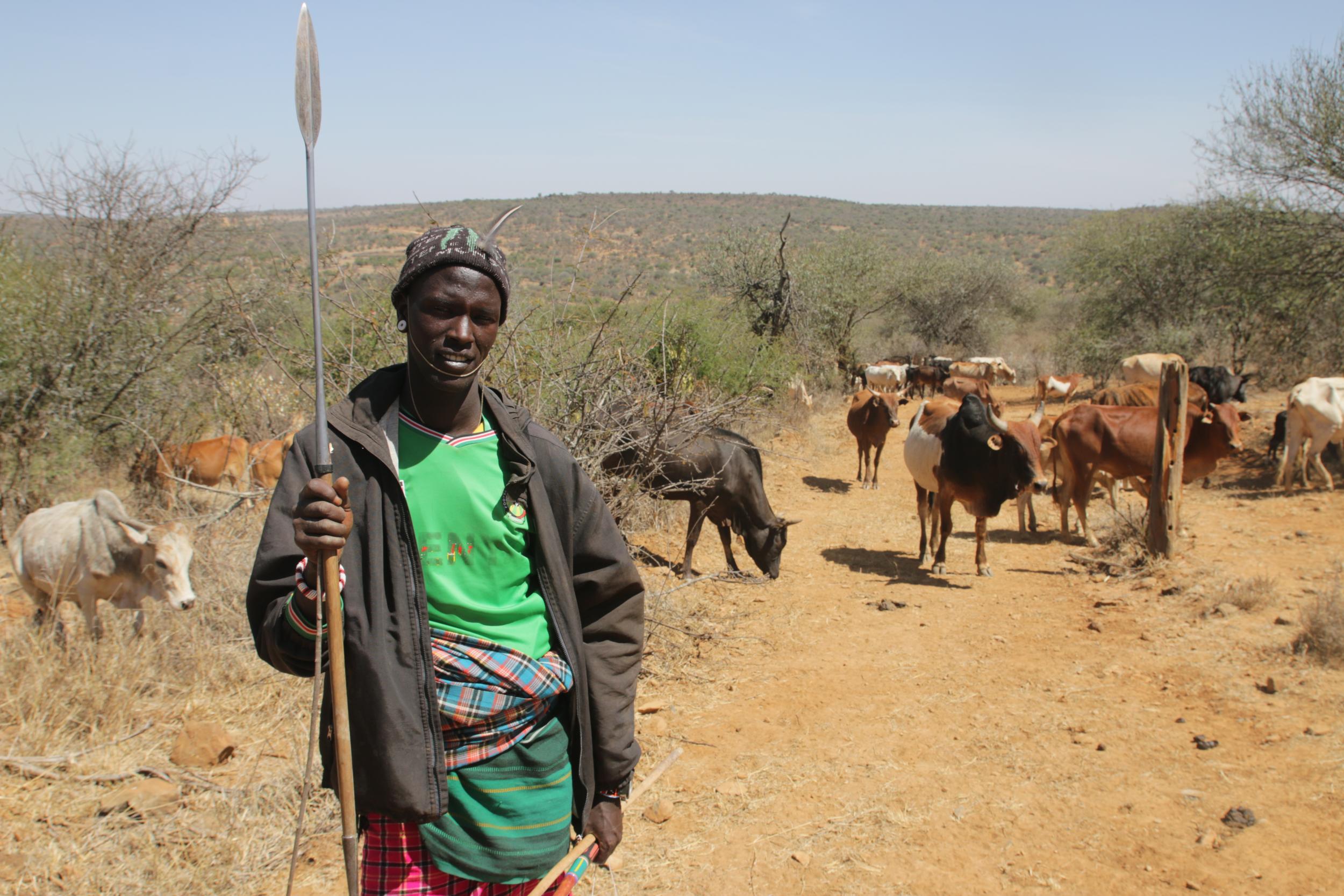One year on from cattle ‘invasions’, Kenyan ranches return to normal
Politics and drought forced thousands of cattle onto private land last year. Wildlife, and tourism, count the cost

Calm has returned to ranches in Kenya’s Laikipia region a year after a series of invasions by illegal herders left several people including Britons dead, livestock stolen, and landowners including Kuki Gallmann injured.
On the 24,000-acre Sosian Ranch, chirping birds and a cool breeze capture the renewed hope of better days ahead.
This is in stark contrast to the dark days that followed the killing of ranch co-owner Tristan Voorspuy. Mr Voorspy was attacked while inspecting his lodges at the ranch in March last year. A month later, Italian writer Kuki Gallmann, whose novel I Dreamed of Africa was turned into a Hollywood film, was shot and injured at her ranch.
“We have had peace this year, no more sounds of guns all over since they killed Mr Voorspuy. Security has been beefed up,” said Daniel Miano, a ranch worker.
After the killing, a local politician, Mathew Lempurkel, was arrested on suspicion of being involved. He was however acquitted by a court in the nearby town of Nanyuki for lack of evidence.
Most operations at the ranch are back to normal, with the lodge enjoying full bookings. But most of the properties destroyed during the invasions are yet to be rebuilt.
Within Sosian Ranch, Chali and Romeo hotels were burnt down and still lie in ruins.
“It has been a slow process, but currently, visitors are trickling in, although we have not had non-residents since the attacks. We are hoping that non-residents will start coming from June,” said David Macharia, the deputy lodge manager.
However, he said despite the return to normalcy, things would never be the same again.
“I still recall the tension, the insecurity, even the day they killed Voorspuy,” Mr Macharia said. “It was unsafe even to walk outside of the lodge. Despite the heavy security, every time the dry season sets in, tension resurfaces. But we are hopeful that things will be okay,” Mr Macharia said.
At Ol Maisor Ranch in Rumuruti, the home of Laikipia Farmers Association chairman Martin Evans, life is back to normal.
Last year, herders invaded the ranch, killing one worker. Normal operations According to Mr Evans, normal operations have resumed on the 29,000-acre farm. The family’s residential house has also been redesigned.
Last April, conservationist Kuki Gallmann was shot and injured by illegal herders who had invaded her 100,000-acre Ol Ari Nyiro Ranch. Ms Gallmann has since relocated to Nairobi.
This article is reproduced here as part of the Giants Club African Conservation Journalism Fellowships, a programme of the charity Space for Giants and supported by the owner of ESI Media, which includes independent.co.uk. It aims to expand the reach of conservation and environmental journalism in Africa, and bring more African voices into the international conservation debate. Read the original story here.

Join our commenting forum
Join thought-provoking conversations, follow other Independent readers and see their replies
Comments
Bookmark popover
Removed from bookmarks